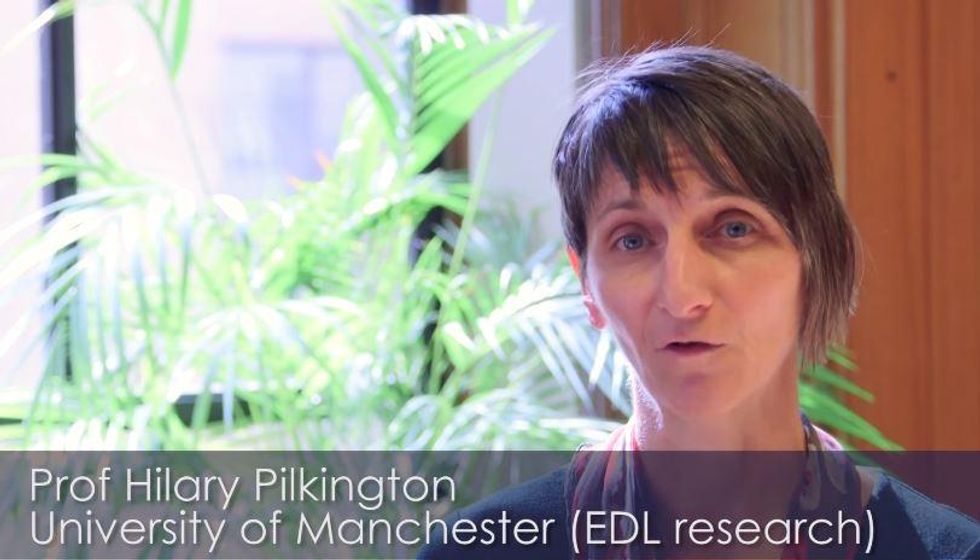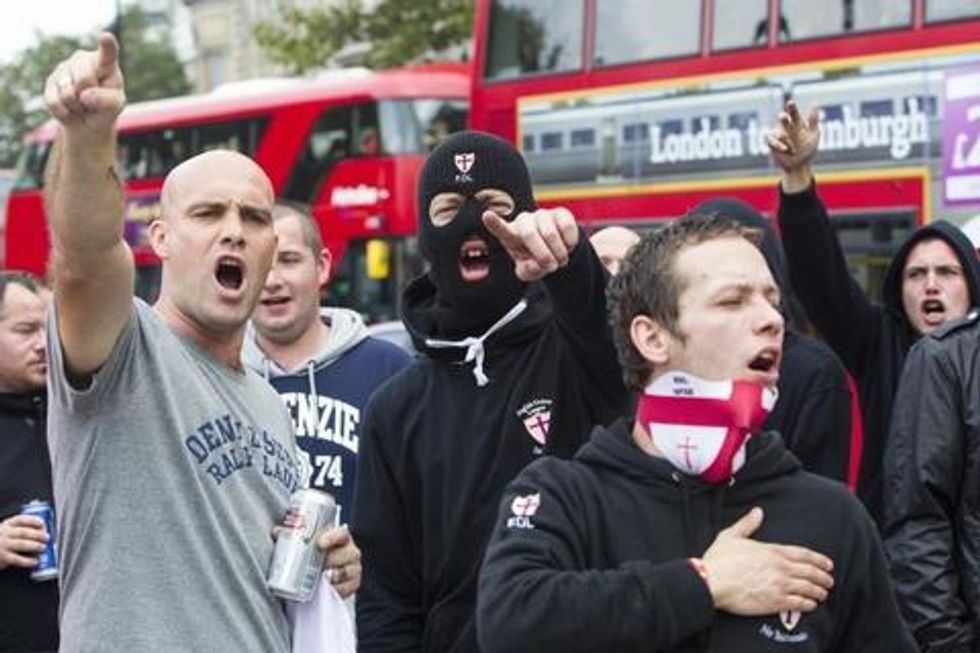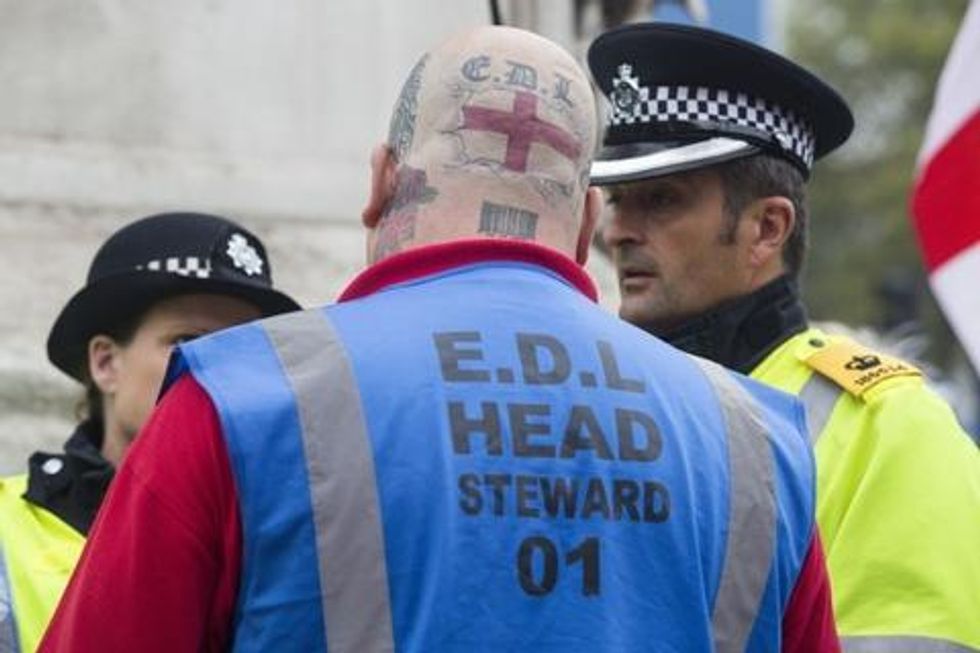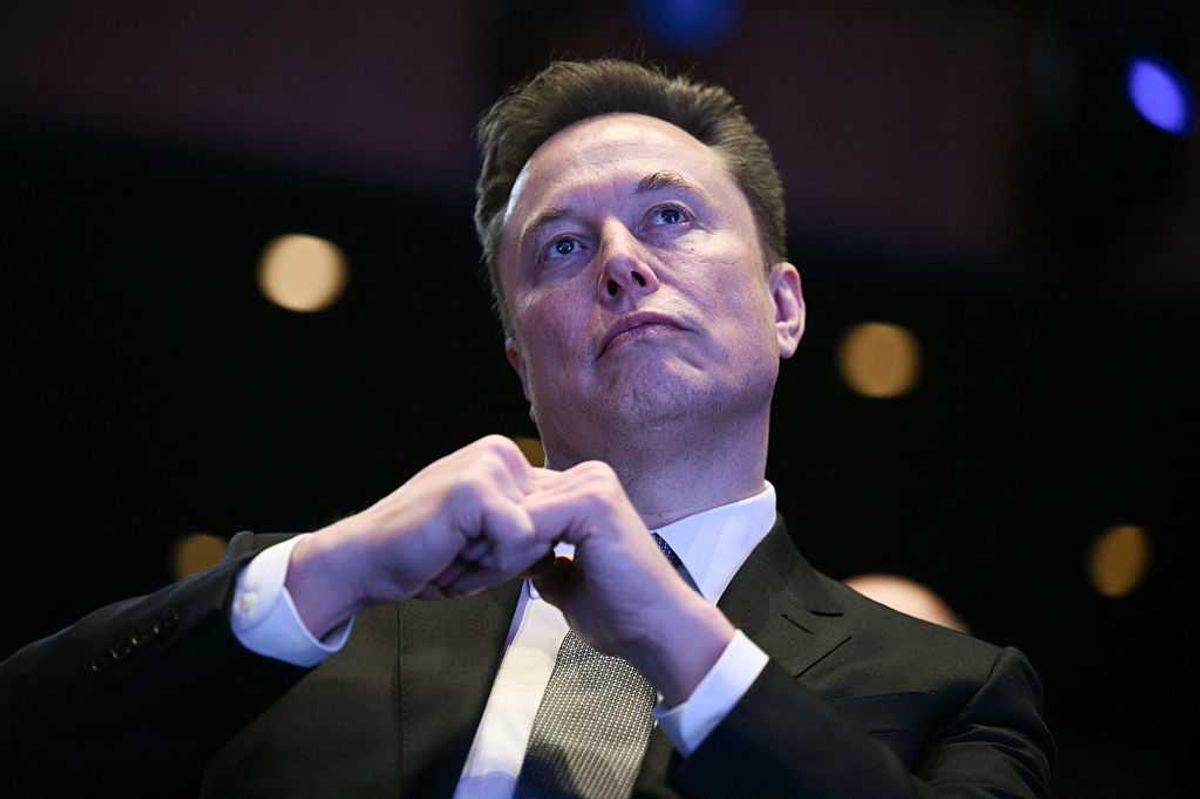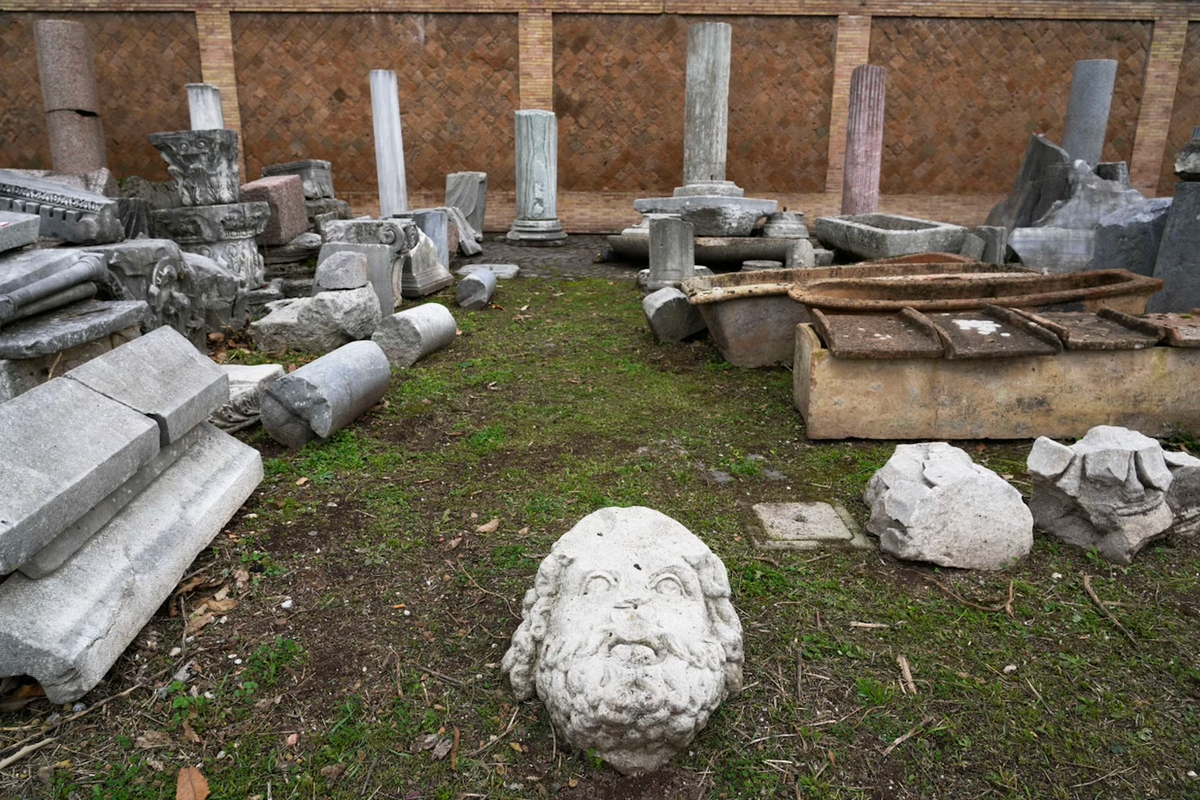News
Joseph Vesey-Byrne
Jul 18, 2016
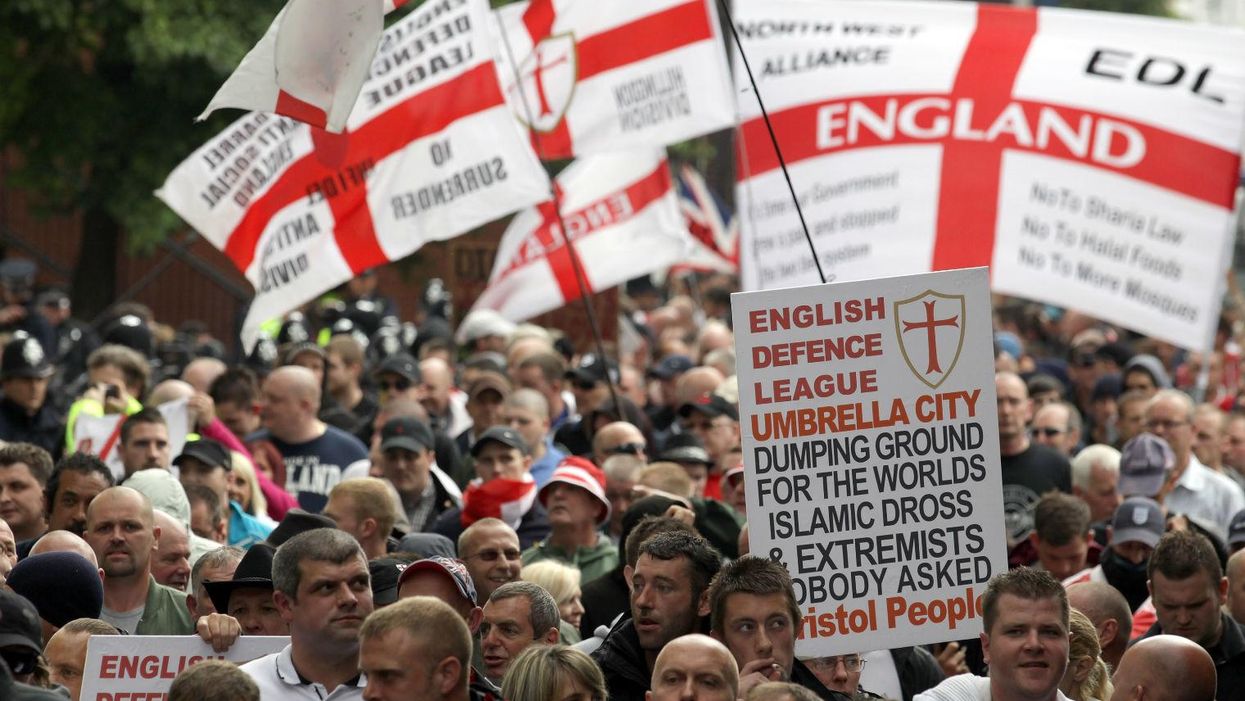
Picture: Matt Cardy/Getty
A recently released book examines the membership and motivations of the English Defence League (EDL) - and found many attitudes held by the far-right group's activists are also evident in more mainstream political discussions.
On Saturday the far right English Defence League (EDL) assembled in Hyde Park for a ‘national demonstration’.
Judging by photographs and this clip posted to YouTube, the march resembled many held by the EDL in recent years: a low turnout, and a membership without the fervent evangelism of other groups such as Britain First.
One participant carried a sign that read:
The EDL Supports: Equality before the law, democracy, BACON, Freedom of speech, tolerance, ...female/male equality, dogs, GSTQ, music. That's why we oppose Islam.
But the group which began in 2007 at its peak saw thousands of members attend its demonstrations. How has this change of fortune come about?
indy100 spoke to Professor Hilary Pilkington, an academic from Manchester University, who spent three years between 2012-2015 conducting field research on the EDL to produce “Loud and Proud: Passion and Politics in the English Defence League”.
In total she attended 25 demonstrations and conducted approximately 30 formal interviews, as well as joining some of the more informal social gatherings.
The research formed part of the MYPLACE (Memory, Youth, Political Legacy and Civic Engagement) project. Its aim was to study 44 examples of youth activism across the political spectrum and to understand how the totalitarianism and populism in the twentieth century has shaped youth movements in the twenty-first. Of the far right groups in Britain, the EDL were the most youth orientated.
Selecting such a group came with repercussions. There was some wariness from other academics that were both unfamiliar with and cautious of research that could be construed as rationalising far right sentiments. Pilkington herself notes in the book:
[There are] political implications of choosing to conduct an ethnographic study of a movement widely perceived to actively perpetuate racism.
But the professor formulates her own political position in undertaking the research as located on neither side of the barricades but in the belief that "there should be no areas of social life that are unfit for scientific study.”
After some initial nervousness that she might be an undercover journalist, the EDL were willing to speak to her, and Pilkigton says she was never intimidated by any of the participants.
The results of the observations were a complex insight into the motivations of EDL supporters and revealed the personal narratives that supporters use to define their activism.
A great deal of hostility was found to exist between the EDL and other far right groups. EDL members did not consider themselves racists, and they often condemned the British National Party and Britain First as racists and fascists.
Yet, when comparing the narratives expressed in interviews to the actions she witnessed at demonstrations, Pilkington found that while some activists were insistent that their criticism was directed specifically at 'militant Islam' or 'Islamism', others slipped into more anti-Muslim or anti-immigrant terminology.
Of further interest was the motivation for the activism. The EDL participants in the study were motivated by a feeling that they were second class citizens, and demonstrations were a way to express this resentment. Yet the demonstrations were not attended because they would lead to change.
What is striking about narratives among grassroots EDL activists is that while emotions such as anger, hate, fear and respect pepper their narratives, ‘hope’ is directly mentioned only once and in relation to its absence.
Speaking to indy100, Pilkington said that in the absence of hope that things will change, the motivation for activism is the concept of ‘No surrender’. For EDL supporters the system is considered to be insurmountable, but nevertheless feel they ought to try to be a thorn in the side of the establishment.
Another feature which sets the EDL out from other far right groups is its organisational structure. Unlike groups such the BNP or Britain First which are more monolithic and have leader focuses, the EDL is a much “flatter” organisation. The structure of the movement consists of a leader, regional organisers and division leaders, but these roles are often rotating and forums such as the national EDL Facebook page are rarely used for discussion.
Pilkington found that EDL supporters value “structures with diverse and diffuse leadership”, which was something common across the political spectrum of youth activism studied in the broader MYPLACE project.
Pilkington also commented on the fluidity of membership and the high turnover of activists. She had expected a much more organised group. Thanks to the high turnover, Facebook group 'admins' could end up with more responsibility for maintaining a 'division' than official organisers, but even this commitment could wax and wane depending on the individual.
According to Pilkington the movement’s lack of clear leadership means that many within the EDL feel conflicted about the type of action they ought to be taking.
“A lot of people feel they should be doing more [than street demonstrations]”, Pilkington said.
Setting up an EDL branch could be as simple as printing a place name on a hoodie. The EDL has no formal membership process, nor membership fee. Moreover, people in leadership roles often “step back” after a period of time due to the intense public pressure that can be placed on them as the face of any local movement. EDL activists would often express resentment at being 'outed' by the media as EDL members, aware of the stigma attached. As a result, just as EDL divisions are easily created, they are also easily disbanded - or more accurately, lapse into silence.
Pilkington also found that news events were what swelled support, rather than any actions taken by the organisation. Immediately after the murder of Fusilier Lee Rigby by terrorists in Woolwich, the numbers at EDL rallies surged to the thousands from what had been a nadir of 200-300.
This weekend's demonstration in Hyde Park didn't show a resurgence, possibly nulled by the idea that free movement could be coming to an end after Brexit.
Pilkington’s research showed that the EDL can be a continuation of rhetoric used in mainstream circles, and as demonstrations rather than a formal membership organisation, their support is determined by events.
Steve Eddowes, former chair of the EDL Management Committee has called the group a platform for people to go when they’ve had enough. This feeling doesn’t last long enough to sustain membership.
Demonstrations now, seven years since the EDL’s inception, rarely muster more than 150 attendees. Pilkington’s study, in the same year as Hsiao-Hung Pai’s Angry White People which also addresses the appeal of the EDL, provides a useful insight for opponents of the fascist fringe: in order to better temper their influence, it would be more productive to stop combating the far right as though it were a homogenous movement.
Loud and Proud: Passion and Politics in the English Defence League is available for purchase from Manchester University Press.
More: An EDL protest in Bristol got well and truly upstaged by naked cyclists
More: Britain's new far-right movement has had an absolute nightmare start to life
Top 100
The Conversation (0)
